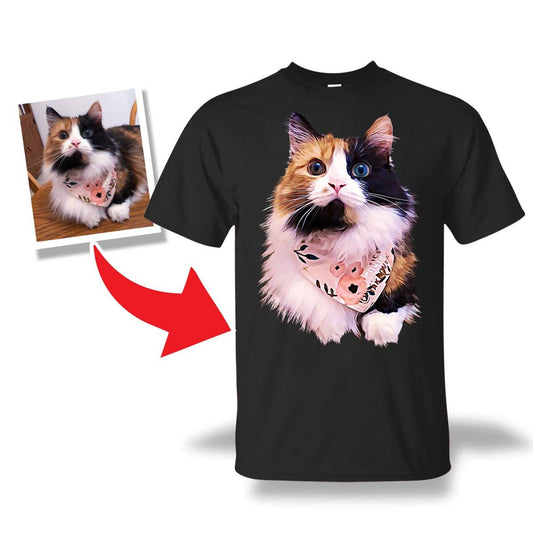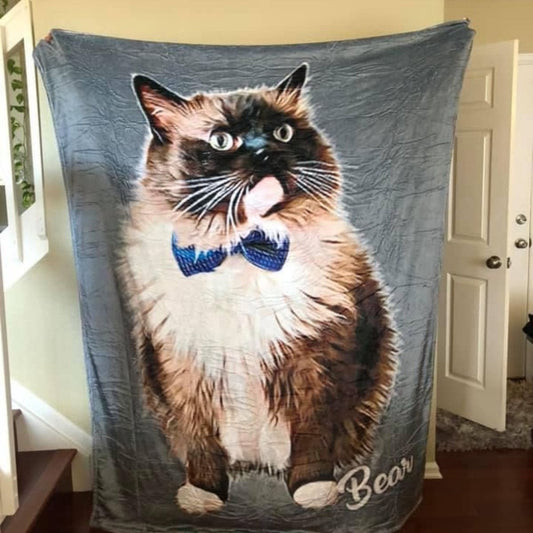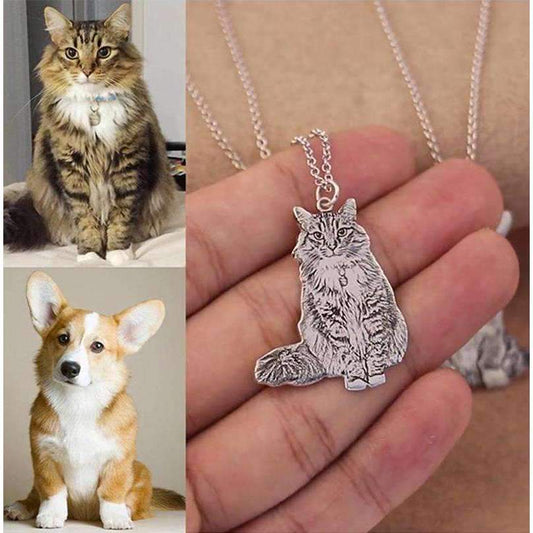Outdoor cats enjoy the freedom of the outside world, but this freedom comes with significant risks such as traffic accidents, encounters with other animals, and exposure to diseases. To keep our feline friends safe while satisfying their natural instincts, it's crucial to create a secure and enjoyable environment both indoors and outdoors. This article explores effective strategies to keep an outdoor cat safe, ensuring they can still indulge in their curiosity and playfulness without compromising their well-being.
Key Takeaways
- Enhance indoor spaces with strategic placement of boxes and potted plants to make the environment more interesting for cats.
- Utilize secure cat enclosures to provide safe outdoor access that satisfies a cat's natural instincts without exposure to risks.
- Protect gardens by using scents that deter cats and by creating a designated cat-friendly area with safe plants.
- Support community cats by creating a tailored environment with essential resources and a comfortable habitat.
- Transition cats from outdoor to indoor living by feeding them indoors and engaging them with activities to delay outdoor access.
Creating a Stimulating Indoor Environment

Leave the Curtains Slightly Drawn
Providing your feline friend with a window to the world can greatly enrich their indoor life. By leaving the curtains slightly drawn, you create a private nook where your cat can observe the outdoors safely. This simple act can satisfy their curiosity and prevent them from feeling the urge to venture outside.
Cats are naturally drawn to window views. A partially covered window allows them to engage with the environment in a secure manner, reducing stress and potential behavioral issues.
To enhance this experience, ensure that your cat has a comfortable spot on the windowsill. If the sill is too narrow, consider a cat perch that attaches to the window. This setup not only keeps your cat entertained but also serves as a sunny spot for them to lounge in.
Any Old Box Will Do
Cats love cozy nooks and crannies, and a simple cardboard box can become a cherished hideaway for your feline friend. With just a few household items, you can transform an ordinary box into a fun and functional cat hiding place.
Here's a quick guide to creating your own cat camper:
- Materials: 1.5 cubic foot cardboard box, tape
- Tools: Razor knife, paint, paintbrushes
- Difficulty: Easy
This project is not only easy to make but also allows for personalization. Choose your cat's favorite colors or match the box to your home decor. For those who are more ambitious, a snow-capped mountain design is a moderate challenge that requires a bit of sewing but results in a delightful retreat for your pet.
Remember, while creativity is encouraged, the comfort and safety of your cat should always be the priority. Ensure that all materials used are safe and that the box is stable and free of sharp edges.
Put Your Cat's Hiding Place Up High
Cats inherently seek elevated hideaways, where they can observe their surroundings from a safe vantage point. Providing a high perch for your cat's hiding spot satisfies this instinctual need. Ensure that the access to this elevated hideout is cat-friendly, with steps or ramps, especially for kittens or older felines who may not jump as easily.
- Install sturdy shelves or cat trees that reach up towards the ceiling.
- Consider wall-mounted options that allow for vertical exploration.
- Place soft bedding or a cat bed on these high perches to make them comfortable.
By creating an elevated sanctuary, you're not only catering to your cat's preferences but also enhancing their sense of security. A high perch can become a favored retreat, offering peace and solitude away from the household bustle.
Use Potted Plants
Integrating potted plants into your home not only beautifies the space but also provides a natural hideaway for your feline friend. Choose cat-friendly plants that are non-toxic and safe, ensuring a stimulating environment for your cat to explore. Positioning several large pots close to each other creates an instant, appealing hiding spot.
To maintain the allure of your potted plants while keeping them off-limits, consider natural deterrents. A simple homemade spray, made by adding a few drops of citrus oil to water, can be misted on the leaves and soil to discourage your cat from getting too close. Additionally, deterrent mats placed under the pots can provide an odd sensation that most cats prefer to avoid.
It's essential to strike a balance between your cat's curiosity and the safety of your plants. Regularly assess your cat's behavior and provide ample toys and attention to prevent boredom, which often leads to unwanted plant disturbances.
Remember, the goal is to ensure safety for pets by creating a secure and engaging environment. This includes not only the indoor space but also any outdoor access, which should be equipped with shelter and safe enclosures.
Safe Outdoor Access

Secure Cat Enclosures
Providing a secure outdoor enclosure is essential for the safety and happiness of your outdoor cat. These enclosures offer a controlled environment where your feline friend can enjoy the outdoors without the risks associated with free roaming. They are designed to be sturdy and escape-proof, ensuring that your cat can play or relax in peace.
The enclosures are easy to set up, requiring no tools, and are portable for convenience. They come with carry bags, making them ideal for travel or storage.
Here are some key features of a popular model found on Amazon:
- Product Dimensions: 39 x 39 x 53 inches
- Weight: 13.8 Pounds
- Model Number: 70881EC
- Manufacturer: Outback Jack
- Customer Reviews: 4.4 out of 5 stars
Customer feedback highlights the effectiveness of these enclosures in providing a safe space for cats to experience the outdoors. Many appreciate the opportunity it gives their indoor cats to safely observe nature, such as birds at a backyard feeder.
Mesh Fabric for Protection
When considering outdoor safety for your feline friend, mesh fabric enclosures offer a reliable solution. These enclosures provide a barrier between your cat and potential hazards while allowing them to enjoy the fresh air and sunshine. OEKO-TEX STANDARD 100 certification ensures that the materials used are tested for harmful chemicals, contributing to the overall well-being of your pet.
To set up a mesh fabric enclosure, follow these simple steps:
- Choose a certified mesh fabric that meets safety standards.
- Measure the area you wish to enclose and cut the fabric accordingly.
- Secure the fabric around the perimeter using a sturdy frame or attach it to an existing structure.
- Regularly inspect the enclosure for any signs of wear or damage, and make repairs as needed.
It's essential to never leave your pet unattended in these enclosures, as the integrity of the zippers and seams might be compromised over time. Always ensure that the enclosure is properly anchored, especially on breezy days, to prevent any accidents.
Remember, while mesh fabric enclosures can protect your cat from many outdoor dangers, they are not a substitute for supervision. Always keep an eye on your cat when they are enjoying their outdoor time.
Portable and Easy Setup
JSON
Protecting Your Garden from Feline Friends

Deterring Cats with Unappealing Scents
Cats are known for their keen sense of smell, which can be used to your advantage when protecting your garden. By introducing scents that cats find unappealing, you can effectively deter them from certain areas.
- Add plants your cat hates: A natural barrier of marigolds, lemon thyme, lavender, or pennyroyal can repel cats.
- Citrus peels: Sprinkle orange or lemon peels around your garden as a quick deterrent.
- Citrus spray: A homemade spray of citrus juice and water can be misted on plant leaves and soil.
While these methods are helpful, it's important to remember that consistency is key. Regularly replenishing scents will maintain their effectiveness in keeping cats at bay.
Creating a Cat-Friendly Garden Section
To ensure your garden is a haven for your feline friend, consider dedicating a section where they can indulge in their natural behaviors. Plant cat-friendly flora such as catnip, wheatgrass, parsley, thyme, and rosemary, which are safe and enjoyable for cats to explore and nibble on.
By creating a specific area for your cat, you not only protect the rest of your garden but also enrich your pet's outdoor experience.
Incorporate plants that naturally deter cats to keep them away from sensitive areas. Marigolds, lemon thyme, lavender, and pennyroyal can form a natural barrier. For an immediate solution, sprinkling citrus peels around your garden can be effective, as cats typically dislike the scent of citrus.
Here's a list of steps to create a cat-friendly garden section:
- Choose a corner of your yard that can be dedicated to your cat.
- Plant cat-safe herbs and grasses for your cat to enjoy.
- Surround the area with cat-repelling plants to protect the rest of your garden.
- Consult with your veterinarian for additional plant recommendations.
Consulting a Veterinarian for Plant Safety
Ensuring the safety of your houseplants for your feline friend is crucial. Consulting a veterinarian is a proactive step to prevent potential toxicity from plants. They can provide a list of safe plants and identify those that pose a risk to your cat's health.
When in doubt, always choose cat-friendly options for your indoor garden.
Remember, cats are naturally curious and may be drawn to plants for various reasons, including their texture, movement, or simply out of boredom. Here are some steps to keep both your plants and cats happy:
- Assess your cat's mental and emotional wellness.
- Provide plenty of toys and attention to deter interest in plants.
- Introduce cat-friendly plants like catnip near their favorite spots.
- Consider deterrents if your cat persists in bothering the plants.
Embrace the joy and challenges of owning a cat. Beware of keeping houseplants safe from curious cats due to potential toxicity. Enjoy the laughter and surprises they bring.
Fostering a Community Cat Haven

Customizing the Environment for Feline Instincts
Creating a community cat haven that caters to the natural instincts of cats is essential for their well-being. To start, ensure that the environment includes various elements that stimulate their curiosity and allow for the expression of natural behaviors. Here are some tips to consider:
- Provide multiple litter boxes in quiet, accessible locations.
- Install scratching posts and climbing structures to mimic trees and high perches.
- Introduce toys and environmental enrichment to keep them engaged.
- Recognize each cat's unique personality traits and cater to them.
By meeting these basic needs and understanding the cats' personalities, you create a space where they can thrive and feel secure.
Remember, a happy cat is more likely to stay within the community haven, reducing the risk of wandering and potential dangers. It's not just about safety; it's about creating a harmonious environment that respects and nurtures their feline nature.
Ensuring Basic Necessities for Community Cats
To foster a successful community cat haven, it's essential to provide the basic necessities that cater to the well-being of these independent felines. Ensuring access to food, water, and shelter is fundamental to maintaining their health and safety.
- Food: Establish regular feeding stations with clean, fresh water and nutritious cat food.
- Water: Provide multiple water sources to prevent dehydration, especially during hot weather.
- Shelter: Offer various shelter options to protect cats from the elements and predators.
It's not just about survival; it's about creating a space where community cats can thrive. By meeting their basic needs, we lay the foundation for a harmonious coexistence between humans and cats.
Remember, a community cat haven is more than just a feeding spot; it's a sanctuary that respects the cats' autonomy while safeguarding their health. Regular health check-ups and spay/neuter programs are also crucial to prevent overpopulation and ensure the community's well-being.
Transitioning from Outdoor to Indoor Living
Feeding Indoors to Encourage Staying Inside
To encourage your cat to embrace indoor living, start by feeding them inside. This positive association can make the indoors more appealing. If your cat is eager to return outside after eating, try engaging them with playful activities to delay their departure. Over time, this can extend the periods they spend indoors.
It's essential to remember that indoor cats generally enjoy longer, healthier lives. By enriching the indoor environment with attention and interactive play, your cat will increasingly prefer the comfort and safety of the home interior. For any concerns regarding your cat's health or adjustment, don't hesitate to reach out for professional advice.
Cats naturally seek out cozy hideaways. Replicate this behavior indoors by providing boxes or secluded spots where they can retreat and feel secure. This can be a simple yet effective way to make the indoor environment more enticing.
Creating a stimulating indoor environment is not just about safety; it's about offering a space where your cat can thrive. With patience and consistency, your cat's preference for the great indoors will grow, fostering a stronger bond between you both.
Delaying Outdoor Access with Engaging Activities
To effectively delay your cat's outdoor access, consider engaging them with a variety of activities that cater to their natural instincts. Interactive toys, puzzle feeders, and regular play sessions can all serve to keep your cat entertained and less focused on the outdoors.
- Interactive toys stimulate the mind and encourage physical activity.
- Puzzle feeders make mealtime a challenging game.
- Scheduled play sessions help establish a routine.
By providing a safe and stimulating environment and ensuring your cat's needs are met indoors, you can gradually reduce their desire to venture outside. This transition not only keeps them safer but also strengthens the bond between you and your feline friend. Remember to always provide fresh water and a comfortable sleeping area to enhance their indoor experience.
Consistency is key in making this transition smooth. Use positive reinforcement to reward your cat for spending time indoors, and be patient as they adjust to their new routine.
Conclusion
In conclusion, keeping an outdoor cat safe is a multifaceted endeavor that requires vigilance, creativity, and a deep understanding of feline behavior. While the allure of the outdoors will always be strong for our feline friends, the risks they face—from traffic accidents to encounters with other animals—make it imperative that we provide them with safe alternatives. By creating stimulating indoor environments, secure outdoor enclosures, and dedicated cat-friendly spaces, we can satisfy their natural instincts while protecting them from harm. Remember to consult with your veterinarian for additional guidance on plants and practices that are safe for your cat. Ultimately, the love and effort we invest in creating these safe havens can lead to a harmonious balance where our cats can thrive both indoors and out.
Frequently Asked Questions
How can I make the indoor environment more appealing to my outdoor cat?
You can make the indoor environment fun by leaving curtains slightly drawn for window gazing, providing boxes for hiding, placing cat perches up high, and using potted plants to stimulate their senses. The key is to make the inside as interesting as the outside.
What are some safe ways for my cat to enjoy the outdoors?
Secure cat enclosures offer a safe way for your cat to experience outdoor sights, sounds, and smells without the risks. They are easy to set up, portable, and protect your cat from predators and other dangers.
How can I protect my garden from my cat?
To protect your garden, you can deter cats with unappealing scents like citrus, create a separate cat-friendly garden section with safe plants, and consult a veterinarian for plant safety to ensure non-toxic options.
What is essential for creating a community cat haven?
To create a community cat haven, provide an environment that caters to feline instincts with climbing structures and hiding spots, and ensure basic necessities like food, water, and shelter are readily available.
How can I transition my cat from outdoor to indoor living?
Begin by feeding your cat indoors to create a positive association with being inside. If your cat wants to go back out, distract them with engaging activities and gradually extend the indoor time.
Are outdoor cat enclosures safe to leave outside when not in use?
While outdoor cat enclosures are designed to keep your cat safe, it's recommended to store them indoors when not in use to prevent damage from the elements and ensure longevity.




